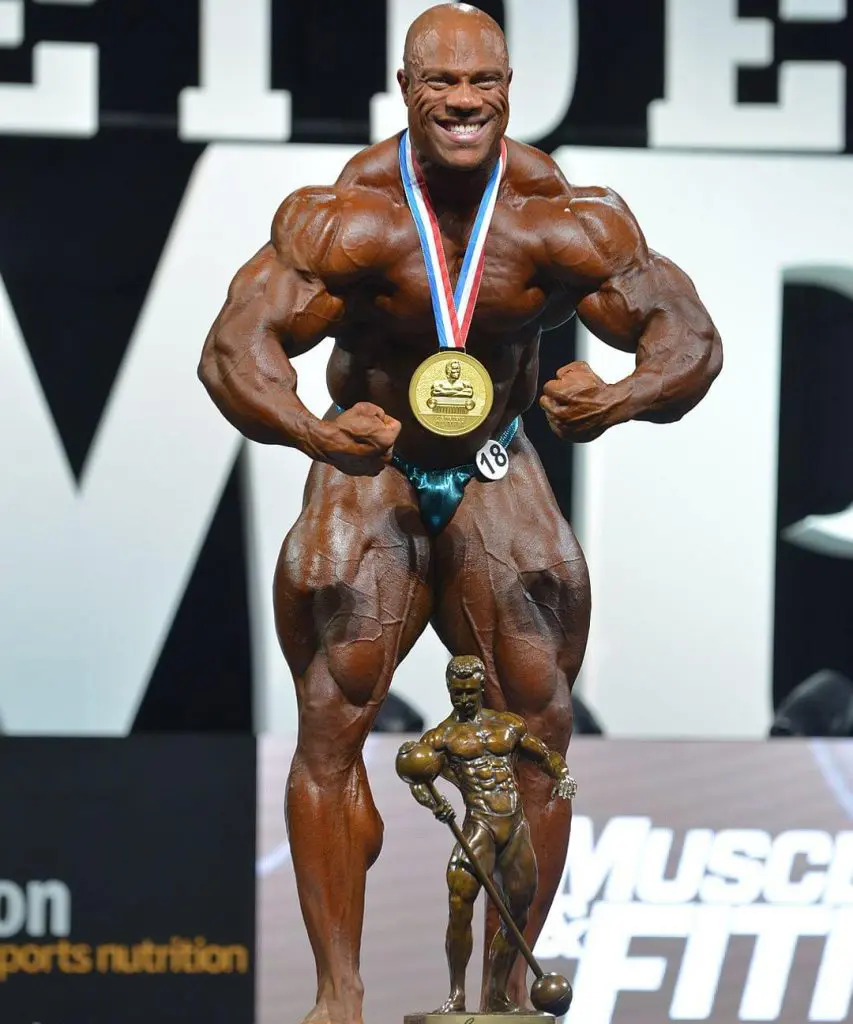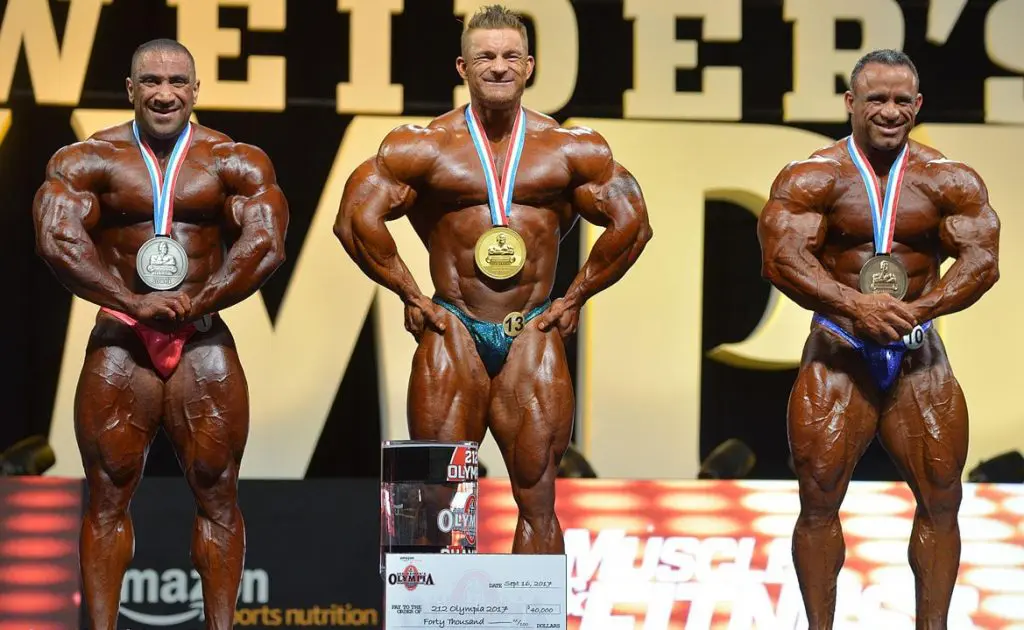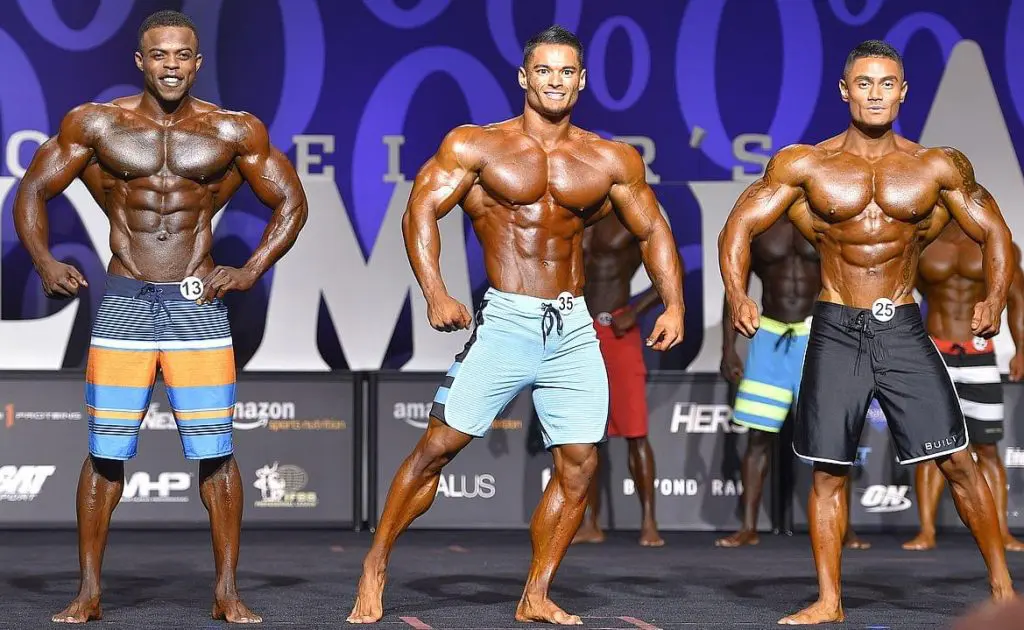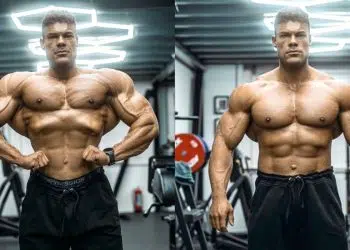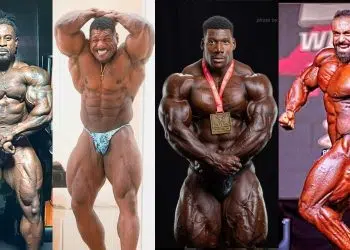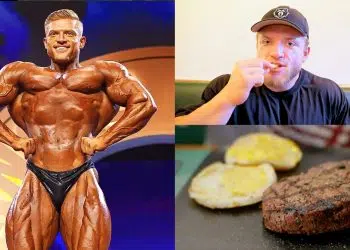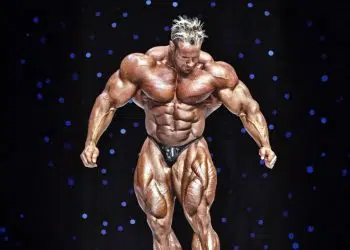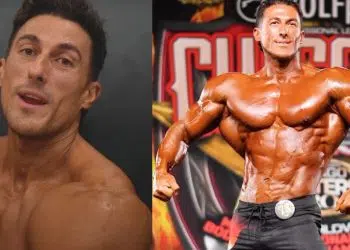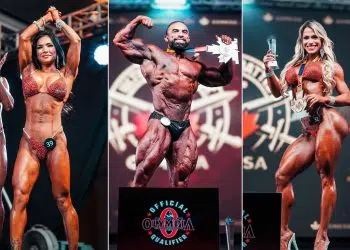Know everything there is to know about the different IFBB Pro League bodybuilding divisions.
Competitive bodybuilding is slowly but surely entering the mainstream. The Olympia Fitness and Performance Weekend, arguably the most prestigious competitive bodybuilding event, has been steadily growing over the years.
There is a rise in the number of competitors at the Olympia every year. The prize money has been surging consistently. Fans line up in bigger numbers at the meet and greet every year, while the online coverage of contests reaches a larger audience.
Notably, the number of divisions in bodybuilding shows has gone up significantly over the last few years to accommodate athletes with different body types.
However, the influx of new divisions and blurring of lines between the older ones can be confusing, especially if you are new to pro bodybuilding.
If you recently watched your first pro bodybuilding contest, similar-looking bodybuilders competing in different divisions could have probably left you feeling overwhelmed.
Level Up Your Fitness: Join our 💪 strong community in Fitness Volt Newsletter. Get daily inspiration, expert-backed workouts, nutrition tips, the latest in strength sports, and the support you need to reach your goals. Subscribe for free!
Furthermore, a few pro bodybuilders make a division switch every year — adding to fans’ confusion and hinting athletes themselves are perplexed between divisions.
Although there are at least six major pro bodybuilding organizations (NPC, IFBB, WBFF, ICN, NABBA, ANB), we will be focusing on the IFBB Pro League and NPC for the sake of this article. The NPC and IFBB Pro League are arguably the biggest, most popular, and most reputed bodybuilding organizations. They organize various armature and pro bodybuilding contests — including the prestigious Mr. Olympia.
Types of Bodybuilding
The IFBB Pro league currently consists of 11 bodybuilding divisions:
- Men’s Open Bodybuilding
- 212 Division
- Classic Physique
- Men’s Physique
- Wheelchair
- Women’s Bodybuilding
- Fitness
- Figure
- Bikini
- Women’s Physique
- Wellness
In this article, we will be going over how the 11 bodybuilding divisions differ and how they are judged and scored according to the IFBB Pro league rules.
Must Read: Understanding How Men’s Open Bodybuilding Competitions are Judged and Scored
Different IFBB Pro League Bodybuilding Divisions — Explained
Most pro bodybuilding contests consist of men’s and women’s divisions.
Men’s Bodybuilding Divisions
The IFBB Pro League includes five men’s divisions:
1. Men’s Bodybuilding / Men’s Open Division
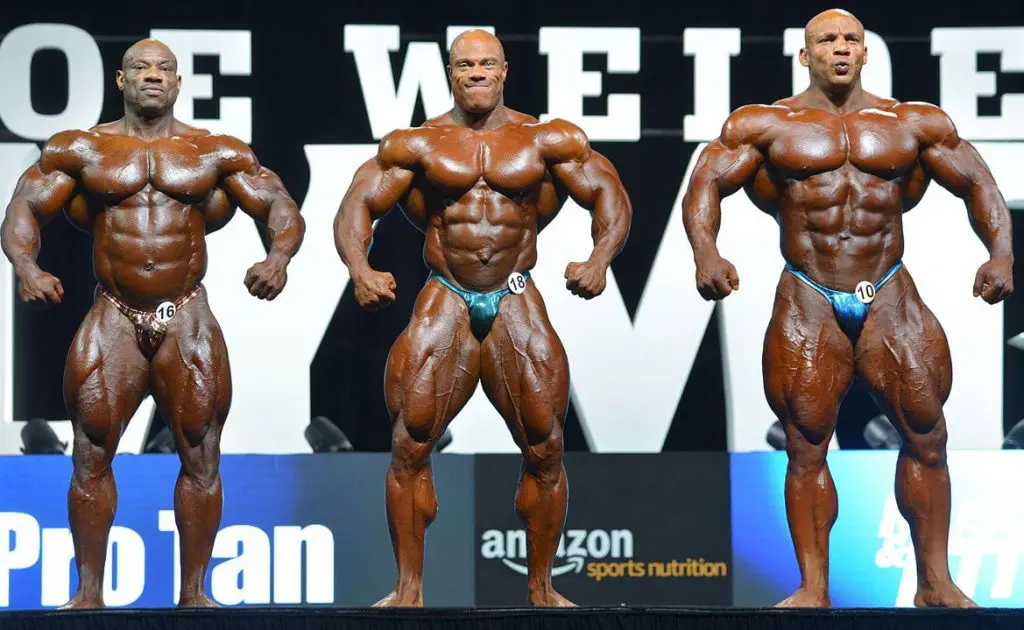
It comprises the largest and most conditioned athletes. Competitors focus on presenting a big, hard, dry, vascular, and striated physique on the stage.
Men’s open competitors are scored based on two rounds — judging and finals.
The judging round includes performing eight mandatory poses and callouts.
The eight mandatory poses comprise of:
- Front double biceps
- Front lat spread
- Side chest
- Back double biceps
- Back lat spread
- Side triceps
- Abdominals and thighs
- Favorite Most muscular
[Read More: Eight mandatory bodybuilding poses]
The finals include a three-minute individual posing routine and confirmation round. IFBB Pro League uses the scoring system to assess a competitor’s muscle proportion, symmetry, quality, and size. The judging and final rounds weigh equally in the final score.
The winner of the Men’s Open division at Olympia weekend earns the Mr. Olympia title, the coveted Sandow, and a hefty cheque. Additionally, the Mr. O champion is considered the best bodybuilder in the world.
2. 212 Division or 212 Olympia
The 212 division was introduced in 2011. It was put in place for shorter individuals who could not accumulate the same muscle mass as their taller counterparts.
When the division launched, the requirements for this class were that the athlete needed to weigh up to and under 212 Lb (i.e., 96.6 kg) and must be less than 166m or 5’5″ in height. However, the height limitation has since been scrapped.
The 212 rules and poses are the same as Men’s Open division, with the main difference being that a competitor has to weigh less than 212 pounds to compete in the division.
3. Classic Physique
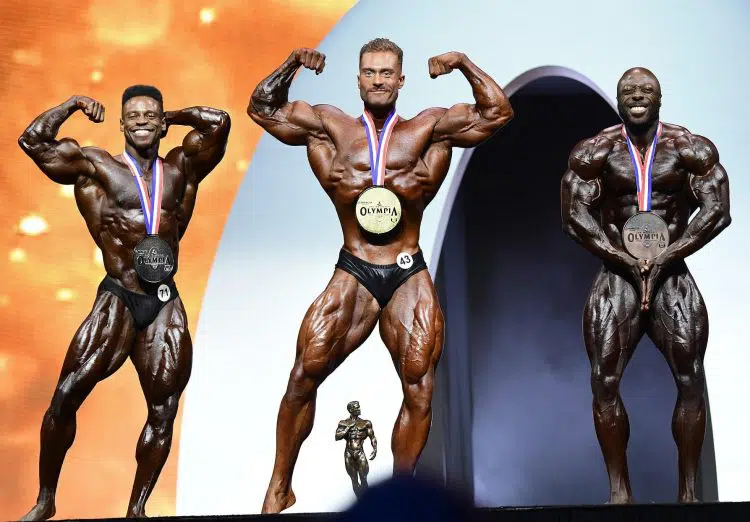
The Classic Physique division started in 2016 as a middle ground between the open and Men’s Physique divisions. Athletes in this division are not as big as those in the Open division but are considerably bigger than competitors in Men’s Physique division.
This division has fast become one of the most popular contests and is promoted by bodybuilding legends like Arnold Schwarzenegger. The Classic Physique division focuses on bringing back the golden era aesthetics (the 1960s to 1980s) — broad shoulders, narrow waist, muscular legs, and overall conditioning, symmetry, and size.
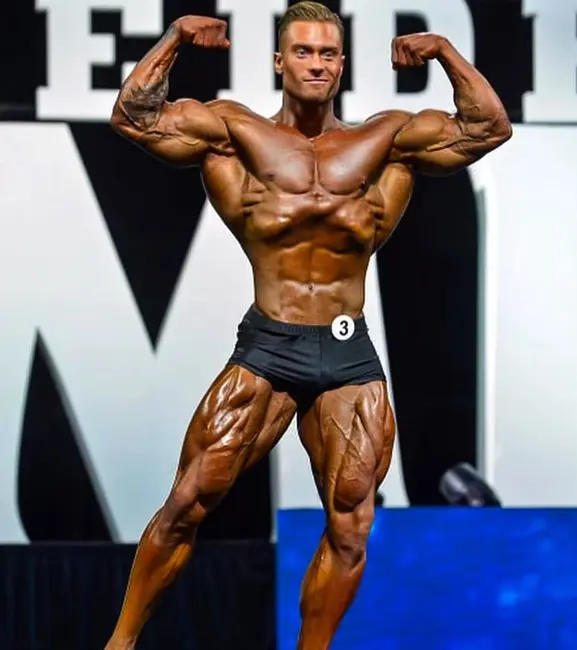
Classic Physique competitors step on stage wearing black boxer briefs and perform six mandatory bodybuilding poses and an individual posing routine during the finals. Judges look for mass, but more so conditioning and symmetry.
The six poses include:
- Front double biceps
- Side chest
- Back double biceps
- Side triceps
- Abdominals and thighs
- Favorite classic pose (no most muscular)
The Classic Physique division consists of different classes based on height and weight. Athletes have a weight limit based on their height.
4. Men’s Physique
The Men’s Physique division was launched in 2012 for bodybuilders (and fans) who thought the bodybuilding divisions pushed the athletes to get too big. This division combines the muscular, lean look with athleticism and overall aesthetics.
The Men’s Physique division has quickly become one of the most popular divisions for men. Bodybuilders in this division are trying to nail the beach body (model look) and step on stage wearing board shorts.
The judges do not consider a competitor’s leg development in this division. They focus more on the upper body structure, shoulder to waist ratio (52.5″ to 27″ of former champion Jeremy Buendia), arms, calves, chest, back, and shoulders development.
Posing in the Men’s Physique division is different from the other three conventional bodybuilding divisions. Each competitor has to perform a series of back and front turns on stage. The athletes are prohibited from performing the eight mandatory bodybuilding poses on a Men’s Physique stage.
A Men’s Physique contest consists of two rounds — judging and finals (confirmation), and the athletes are scored on their muscle mass, conditioning, proportions, and stage presence.
Level Up Your Fitness: Join our 💪 strong community in Fitness Volt Newsletter. Get daily inspiration, expert-backed workouts, nutrition tips, the latest in strength sports, and the support you need to reach your goals. Subscribe for free!
Within the division, there are different divisions based on height:
- 5’6” and below
- 5’6” – 5’8”
- 5’8” – 5’10”
- Over 5’10”
Read also: All Men’s Physique Olympia Winners
5. Wheelchair
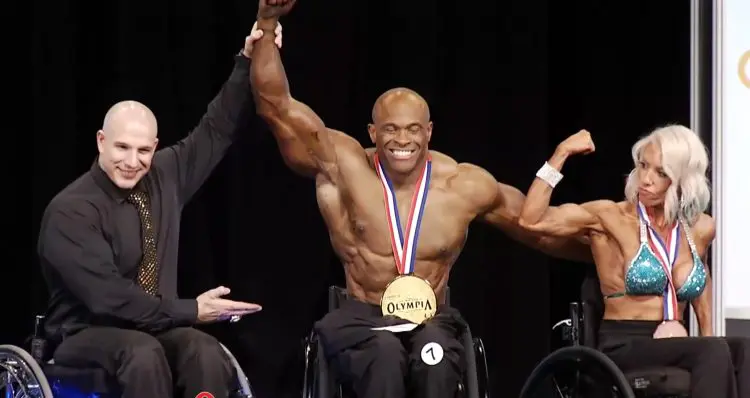
The WCBB (Wheelchair Bodybuilding) is the most popular bodybuilding organization for competitors who use wheelchairs. WCBB athletes can earn IFBB Pro cards and compete at the Wheelchair Olympia.
The wheelchair bodybuilders wear loose-fitting training pants on stage and are scored based on their upper body muscle mass, conditioning, and symmetry.
The four mandatory poses for wheelchair bodybuilders include:
- Front double biceps
- Side chest
- Back double biceps
- Abdominals
Women’s Bodybuilding Divisions
There are a total of six women’s bodybuilding divisions in the IFBB Pro League:
1. Women’s Bodybuilding (Ms. Olympia)
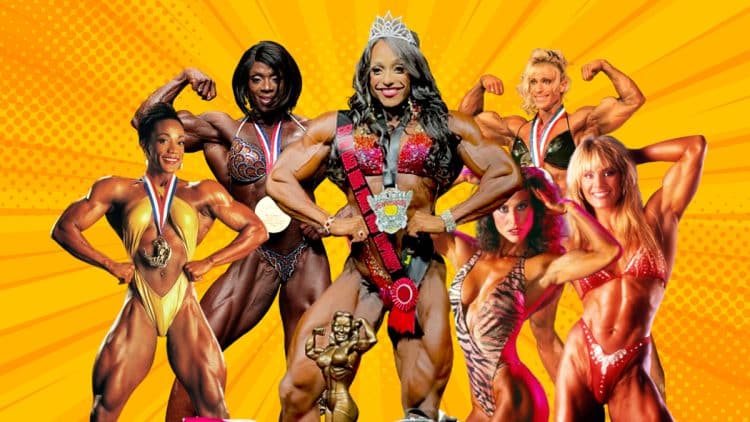
The Women’s Bodybuilding division is similar to Men’s Open Bodybuilding division. Women’s bodybuilding is one of the most controversial and arguably the least popular divisions. It was excluded from the Olympia in 2014 before being re-introduced again after five years in 2020.
Women’s Bodybuilding competitors are scored based on their size, muscle symmetry, and definition. Competitors perform seven mandatory poses and an individual posing routine.
The seven mandatory poses include:
- Front double biceps
- Front lat spread
- Side chest
- Back double biceps
- Back lat spread
- Side triceps
- Abdominals and thighs
Read also: All Ms. Olympia Winners
2. Fitness
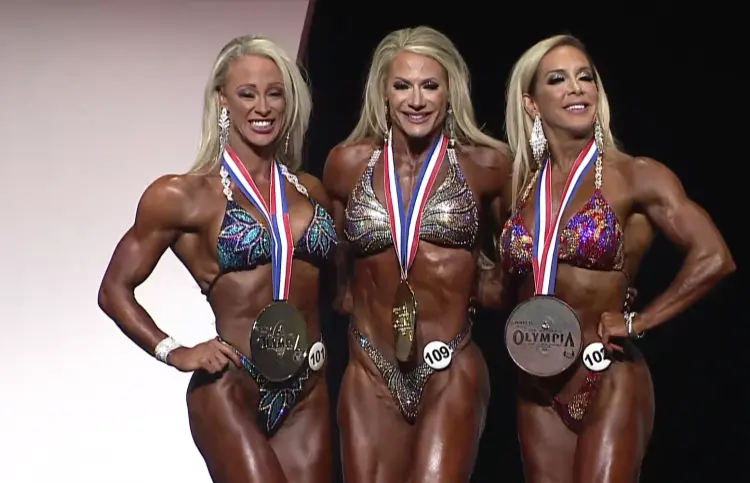
The Fitness division is one of the most dynamic divisions in the sport. This division usually consists of athletes who are bodybuilders, gymnasts, cheerleaders, and dancer hybrids.
The competitors display incredible muscle size, definition, strength, and agility. Fitness athletes go through two rounds — judging and finals. In the judging round, competitors perform four quarter turns while wearing a two-piece bikini and high heels.
The finals include two rounds. In the first round, the competitors perform a two-minute fitness routine wearing a costume. The objective of the fitness routine is to show off an athlete’s physical fitness level and strength.
After the fitness routine, the competitors are summoned for a confirmation round wearing a bikini. The fitness routine must contain the following mandatory movements:
- Push up (of any kind)
- High kick
- Straddle hold
- Side split
3. Figure
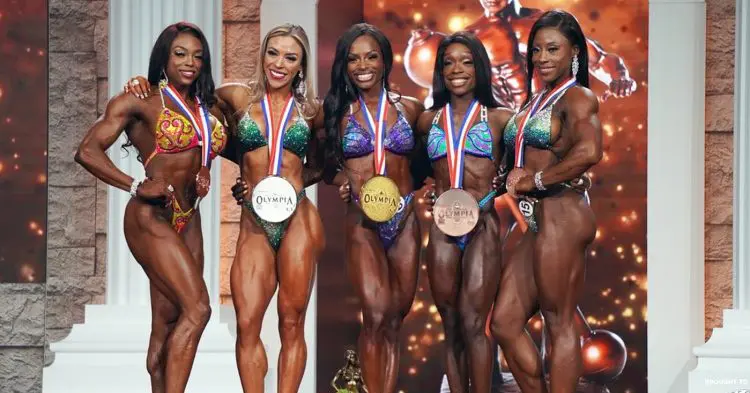
Competitors in the figure division do not perform conventional bodybuilding poses. Instead, they perform a series of four quarter turns similar to athletes in the Men’s Physique division.
A Figure contest consists of two rounds — judging and finals (comparison round).
Judges are looking for an overall developed physique with good muscular symmetry and proportions. Competitors should display good muscularity and muscle separation but should not be excessively lean. Deep musculature and striations are marked down in the contest.
Hamstrings, glutes, shoulders, and back are the most important muscle groups in the contest.
The Fitness division is the right fit for individuals with genetically wide shoulders and a narrow waist. Additionally, women who have more muscle mass or a tendency to put on muscle easily often do well in the division.
4. Bikini
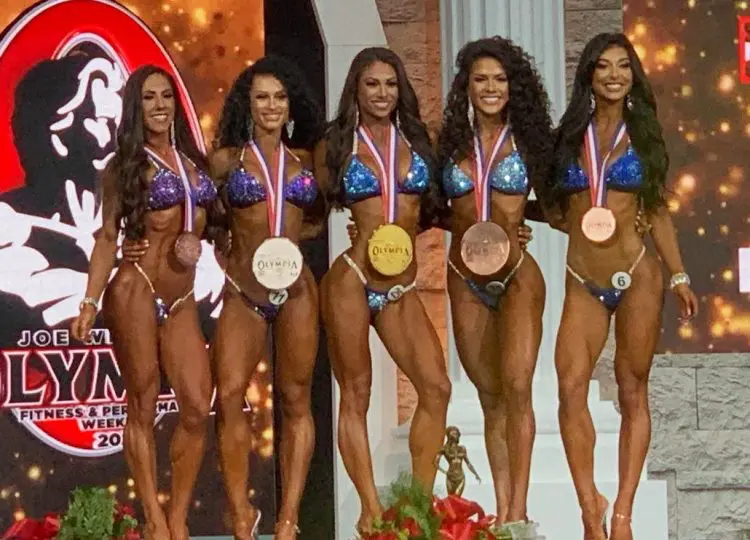
Bikini is arguably the most popular women’s division. They are nothing short of a fashion show. Bikini contests usually have the highest number of competitors in a show.
Competitors in the bikini division have the least amount of muscle mass than women competing in other divisions.
Bikini contestants focus on nailing the beach body (model look). Hence, the athletes are required to build less muscle mass, making it more appealing to a wider variety of women. The division is perfect for women with a small waist, curvy structure, and long, shapely legs.
The Bikini division consists of two rounds — presentation and comparison round. In the presentation round, competitors walk on stage alone and perform their model walk.
Judges score the competitors based on their muscle balance, shape, and overall physical appearance, including complexion, hair, skin tone, poise, and overall presentation.
5. Women’s Physique
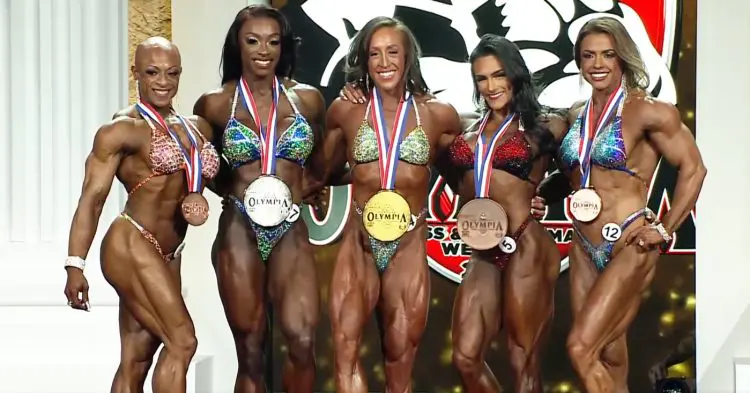
Women’s Physique division was introduced along with the Men’s Physique division in 2012. However, the division is closer to Men’s Classic Physique division in that aesthetics and shape are valued more than mass.
Judges look for symmetry, shape, proportion, muscle tone, poise, and stage presence in the division.
The Women’s Physique division is perfect for women who pack on muscle easily and can develop better muscle conditioning, definition, and separation.
Interestingly, unlike bikini and figure competitors, Women’s Physique contestants are barefoot on stage instead of wearing high heels.
Women’s Physique competitors perform the following five mandatory poses:
- Front double biceps, with open hands (no flat-footed full front pose but instead, some type of front twisting pose)
- Side chest, with arms extended
- Back double biceps, with open hands
- Side triceps, with leg extended
- Abdominal and thighs
The Women’s Physique competitors also perform a series of quarter turns and an individual posing routine along with the mandatory poses.
Although competitors in this division have more muscle definition than figure and bikini contestants, bodybuilders with excess muscle mass are negatively marked. The rules for this division note that women competing in the physique class should not be “ripped” or “shredded.”
6. Wellness

The Wellness division is the latest addition to the IFBB Pro League. The first Wellness Olympia was held in 2021. Wellness is divided into different height classes.
According to the IFBB Pro League, “This division is for females with athletic physiques that showcase more body mass in the hips, glutes, and thigh areas. The upper body should be developed but not to the same degree as the lower body.”
The Wellness competitors need to perform a series of quarter turns and a model walk. Judges look for conditioning almost on par with the bikini athletes, but the Wellness competitors need to display more muscle mass. Additionally, the athletes are expected to have a little body fat with slight separation but no striations.
Wrapping Up
Now that you understand the different competitive bodybuilding divisions, you’ll know what the judges are looking for in a competitor during a contest.
Also, if you want to compete but are not sure about the division, this article will help you choose the right division according to your body type and goal physique.

